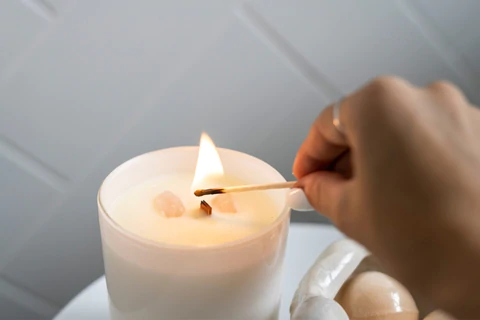Waxes and Butters
How To Conduct a Candle Burn Test
It is critical to conduct candle burn tests while creating candles to guarantee that the candle fulfills safety and performance criteria. A candle burn test can span many weeks, depending on the candle, because each candle in the test must be burned until the candle is either burnt completely or fails to burn.

This test is commonly used by candle manufacturers to demonstrate to consumers that their candles are safe and have a suitable hot throw. Candle burn test will give you an indication of how well built they are, allowing you to optimize their performance. If you want to know how to do a basic, keep reading.
What is Candle Burn Test
A candle burn test is a procedure of experimenting with one component of a candle recipe in order to achieve optimum burning results. A burn test allows you to evaluate the wick size, wax type, fragrance oil or essential oil, hot throw, and color.
Typically, three or more tests are required before arriving at the desired result. A burn test is simple, but it takes time and effort. You’ll need a lot of time because you’ll be taking notes all the time.
When To Conduct Candle Burn Test
The fundamental parameter of a candle burn test is the compatibility of your fragrance oil, wax, and wick. Therefore, You can conduct a candle burn test during the following scenarios while making a candle:
- When developing a new candle recipe.
- Including dyes or micas.
- Increasing the scent burden.
- Add enhancers or wax additives if desired.
- Wax blends are being changed.
- Adding a new fragrance.
How To Conduct Candle Burn Test – Steps by step
Conducting burn tests will be one of the first and most significant phases in your candle-making journey. This will ensure that your candle performs optimally with your chosen wax, fragrance load, and scent kind. Take a look at the measures to take while doing a burning test.
Step 1: Cut Each Wick To 1/4 Inch In Length
It is recommended that you cut the wick to 1/4 inch each time before burning. You may accomplish this with a wick trimmer or a pair of scissors.
Step 2: Burn The Candle
Light each candle and make a note of the start time. Throughout the procedure, you should check the burning performance on a regular basis.
Step 3: Take A Photo of The Candle Every Hour
Every hour, while the candles burn, you can take a photo of the candle group. In this manner, you can see the similarities and differences between them. Trust me, it is far more useful for subsequent analysis than simply watching with your eyes. For example, you may use digital images to compare the width of melt pools, the height of flames, the smoke, etc.
Step 4: After 2 Hours, Check The Melt Pools
The melt pool is crucial in determining if a candle wick is suitably proportioned. After 2 hours, the melt pool of a container candle should reach the container’s wall, whereas the melt pool of a pillar candle should be 1/4 inch from the edge.
Step 5: After 4 Hours, Blow Out The Candles
The first burn has come to an end. You should now write down the specifics of the melt pools and wicks. The melt pool should be 12 inches deep at this time. If you see black smoke mushrooming on the wick tips or deeper melt pools, the wick is most likely too big.
Step 6: Let The Candles Cure Before Repeating
Allow at least 5 hours for the candles to cure. Depending on the wax kind and house temperature, curing might take up to two weeks. Then, repeat the previous procedures until you’ve found the right wick size.
Safety While Performing Candle Burn Test
Consider the following things in mind to conduct a candle burn test safely and properly:
- The most crucial step before doing a candle burn test is to check that your candles have been created and sufficiently cured. Before you begin, you must allow the candle to cure for the appropriate period of time.
- Because wax changes considerably as it solidifies, commencing your before it has been thoroughly cured might result in inaccurate results. Remember to be patient, especially when waiting for your candle to cure.
- If you wish to test numerous candles at the same time, make sure they are properly labeled.

